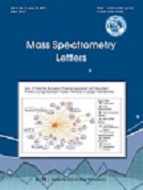
- P-ISSN 2233-4203
- E-ISSN 2093-8950

Honokiol and magnolol, the major bioactive neolignans of magnolia officinalis, are the most important constituents ofthe crude drug prescriptions that are used in the therapy of neuroses and various nervous disorders. There have been limitedreports on the effects of neolignoid compounds on human cytochrome P450 activity. Therefore, the inhibitory effects of honokioland magnolol on seven human cytochrome P450 s were evaluated in human liver microsomes. Honokiol and magnololshowed the most potent inhibition of CYP1A2-mediated phenacetin O-deethylase activity (IC50 values of 3.5 and 5.4 mM,respectively) among the seven P450s tested. These in vitro data indicate that neolignan compounds can inhibit the activity ofCYP1A2 and suggest that these compounds should be examined for potential pharmacokinetic drug interactions in vivo.
Lee, Y. J. (2011). . Pharmacol Ther, 130, 157-.
Teng, C. M. (1988). . Thromb Res, 50, 757-.
Zhang, W. W. (2005). . World J. Gastroenterol, 11, 4414-.
Wang, J. P. (1995). . J. Pharm. Pharmacol, 47, 857-.
Kuribara, H. (1999). . Phytother Res, 13, 593-.
Tsai, S. K. (1996). . Planta Med, 62, 503-.
Kim, M. J. (2005). . Rapid Commun. Mass Spectrom, 19, 2651-.
Joo, J. (2013). . Biopharm. Drug Dispos, , -.
Foti, R. S. (2008). . Drug Metab. Dispos, 36, 523-.
Kumar, V. (2006). . Drug Metab. Dispos, 34, 1966-.
Berthou, F. (1991). . Drug Metab. Dispos, 19, 561-.
Sarkar, M. A. (1994). . Drug Metab. Dispos, 22, 827-.